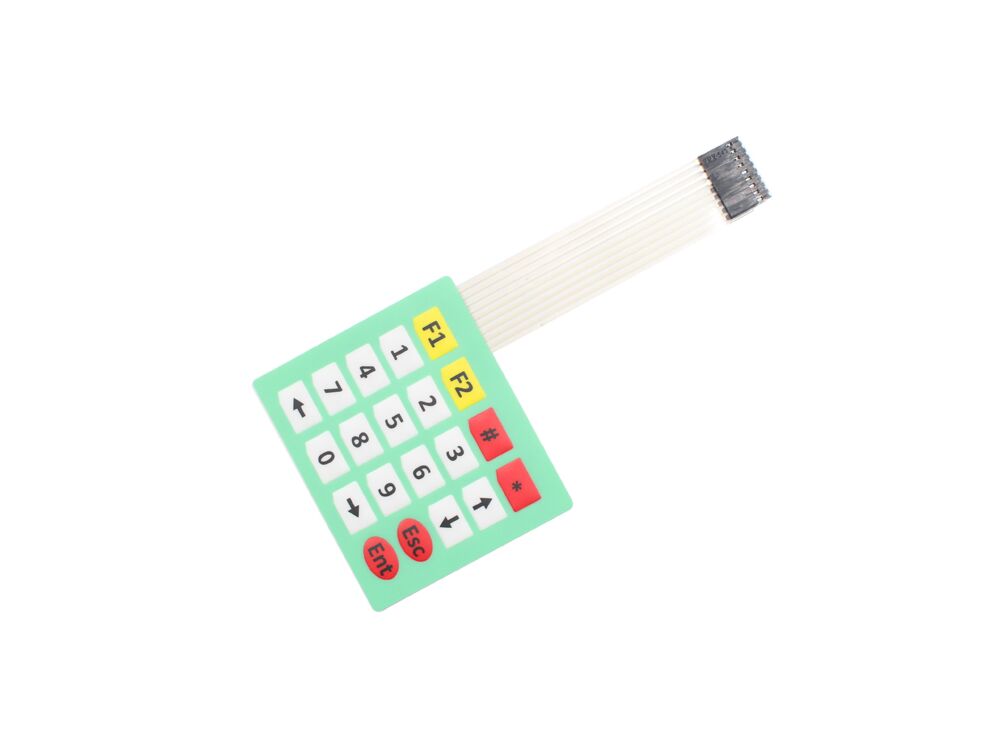Membrane Switch: A Comprehensive Guide to Its Uses and Applications
Membrane Switch: A Comprehensive Guide to Its Uses and Applications
Blog Article
Comprehending Membrane Changes: The Trick to Resilient and Trustworthy Controls
What Are Membrane Switches?
Membrane buttons are a sophisticated remedy in the world of interface modern technology, incorporating functionality and layout perfectly. These gadgets work as an interface between users and electronic systems, integrating numerous parts right into a small style. Normally built from flexible, slim layers of materials, membrane layer switches are developed to reply to touch, allowing individuals to engage with machinery and electronic tools properly.
The main aspects of a membrane switch include a printed circuit layer, visuals overlay, and a spacer layer that avoids unintended activation. The graphic overlay can be personalized to mirror brand name identity or customer preferences, boosting appearances while guaranteeing functionality. Membrane switches are typically made use of in various applications, including medical gadgets, consumer electronic devices, and industrial equipment, owing to their resilience and resistance to environmental elements such as moisture and dust.
One of the vital advantages of membrane layer switches is their capability to withstand wear and tear, making them ideal for high-traffic environments. In addition, they are lightweight and need very little space, allowing for innovative styles in item growth. In general, membrane layer switches over represent a effective and functional choice for modern-day digital interfaces, weding technology with user-centric design principles.
How Membrane Layer Changes Job
The operation of membrane layer switches depend upon an easy yet efficient device that translates customer input right into digital signals. These buttons include multiple layers, commonly consisting of a visuals overlay, a spacer layer, and a circuit layer. When a customer presses the switch, the top layer warps, permitting a conductive aspect in the circuit layer to make contact with a corresponding conductive pad on the bottom of the graphic overlay. This get in touch with shuts the circuit and sends out an electronic signal to the gadget, showing that the switch has actually been turned on.
The style of membrane switches can vary, but they commonly include domes or responsive aspects to provide responses to the individual, enhancing the total experience - membrane switch. The materials utilized in membrane layer buttons, such as polyester or polycarbonate, add to their resilience and resistance to environmental factors, including wetness and dust. Moreover, the published circuits are typically enveloped, which safeguards them from wear and tear gradually.
Benefits of Membrane Layer Buttons

Furthermore, membrane layer switches are known for their sturdiness. Constructed from durable materials, they are resistant to dust, dampness, and physical wear, which dramatically expands their lifespan contrasted to conventional mechanical buttons. This sturdiness makes them specifically appropriate for high-traffic environments and applications needing long life.
Another considerable benefit is the simplicity of cleaning and maintenance. The smooth surface of membrane layer changes lessens dirt build-up and is often resistant to spills, making them optimal for setups that call for constant sanitization.
Additionally, membrane switches use a streamlined profile, leading to a thinner layout that can be integrated right into numerous devices without adding bulk. This attribute not just boosts the visual appeal yet also contributes to a more ergonomic item design.
Applications of Membrane Switches
Easy to use and flexible, membrane layer buttons discover applications across a vast array of sectors, including medical tools, consumer electronics, and industrial equipment. In the medical area, these switches are essential to devices such as analysis devices, patient tracking systems, and infusion pumps, where dependability and ease of cleaning are important. Their ability to maintain and endure severe atmospheres performance makes them perfect for such applications.

In customer electronics, membrane layer buttons are used in products like microwaves, washing makers, and remotes - membrane switch. Their streamlined design permits for user-friendly interface, improving the general individual experience while supplying resilience and resistance to deterioration
Commercial equipment additionally gains from membrane layer buttons, especially in control panels for machinery and automation systems. These switches use defense versus dirt and moisture, guaranteeing regular efficiency in difficult atmospheres. Moreover, their customizable functions allow manufacturers to customize them to certain operational needs, enhancing effectiveness and performance.
Picking the Right Membrane Change
When selecting a membrane layer switch, it is important to take into consideration various aspects that affect efficiency and viability for specific applications. The key factors to consider include environmental conditions, responsive feedback, longevity, and design specs.
First, assess the operating atmosphere; switches subjected to moisture, chemicals, or severe temperature levels call for details materials to make certain durability and performance. Next off, evaluate the requirement for responsive responses. Relying on user interaction, some applications might benefit from a responsive action to verify visit activation, while others might favor a non-tactile layout for visual reasons.
Sturdiness is another critical variable; membrane layer buttons need to be designed to endure frequent usage, impacts, and abrasion. Make sure the chosen switch can endure the anticipated lifecycle, particularly in high-usage circumstances.

Verdict
In verdict, membrane layer switches over offer as important components Continued in the layout of long lasting and dependable control systems across different markets. The flexibility of membrane switches enables for tailored services that meet specific functional needs, strengthening their value in modern-day technology.
Membrane layer changes represent an important facet of contemporary user interface style, mixing functionality with strength in numerous applications.Membrane layer switches are a sophisticated solution in the world of individual interface technology, incorporating capability and design perfectly. Normally constructed from adaptable, thin layers of products, membrane layer switches are made to respond to touch, allowing individuals to engage with machinery and digital gadgets effectively.
The design of membrane layer buttons can differ, but they typically include domes or tactile components to offer comments to the customer, enhancing the total experience.In verdict, membrane layer switches over offer as important parts in the design of durable and reliable control systems throughout numerous sectors.
Report this page